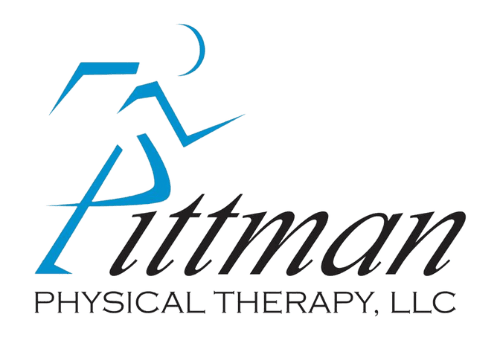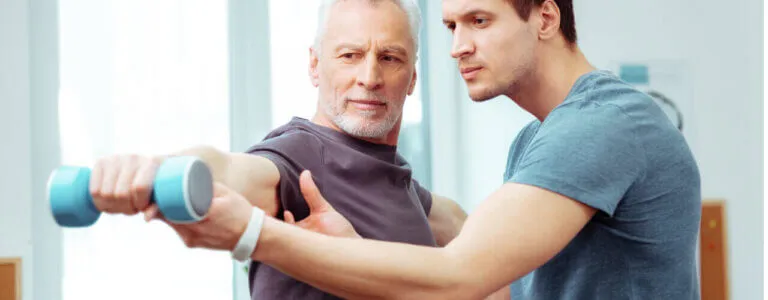Are your joints are painful, achy, or weak? You could be living with arthritis, and you’re not alone if this is the case. In reality, people are diagnosed with more than 100 different forms of arthritis.
The elderly are the most likely group to be diagnosed with arthritis; nevertheless, arthritic symptoms can occur in young people as well!
Male athletes who participate in professional sports are more likely than the general population to acquire arthritis over their lifetime, according to a study published in the American Journal of Sports Medicine. According to the study’s findings, 30 percent of male athletes who participate in contact sports will develop arthritis in their knees and/or hips as a result of overuse and excessive “wear and tear.”
If you have been diagnosed with arthritis, or if you think you’re experiencing arthritic symptoms, call Pittman Physical Therapy today to set up a consultation. We’ll design the best treatment plan for your needs and have you feeling better in no time!
How physical therapy can treat arthritis pain
A common treatment for arthritis is medication, usually for pain manageability. Your physician may prescribe NSAID pain relievers, corticosteroids, antirheumatic drugs, or antibiotics for your arthritis treatment. Medication is easy – you pop it in your mouth, chase it with water, and your pain subsides shortly afterward.
However, they can also cause some unfavorable side effects, and in some cases they can be habit-forming. With NSAIDs, you run the risk of blood clots, heart attack, or stroke. With corticosteroids, you run the risk of cataracts, high blood sugar levels, and bone loss. Luckily, there is a much safer and healthier alternative to treating arthritis: physical therapy.
If you believe you may be experiencing arthritic pain, and you’re looking for relief without the harmful risk of drugs, call our office today. We’ll set you up with a physical therapist who can help you kick the meds and reduce your arthritis symptoms!
Three common types of arthritis
- Metabolic Arthritis. The most common type of metabolic arthritis is gout, a condition caused by uric acid crystals building up in the joints of the extremities, especially in the feet. This is typically a result of reduced kidney function. Physical therapy can help gout patients restore range of motion in the affected area, and it can even reduce the buildup of acidic crystals that accumulate in the joints.
- Rheumatoid Arthritis. Also referred to as inflammatory arthritis, this is the second most common type of arthritis. It occurs when the body’s immune system attacks joint tissues with intense inflammation. Rheumatoid arthritis often has a genetic cause, and doctors usually treat it aggressively with drugs. However, depending on the severity of symptoms, physical therapy may be recommended for treatment as well.
- Osteoarthritis. The most prevalent type of arthritis is osteoarthritis. It is caused by a loss of joint cartilage as a result of “wear and tear” as one gets older. The wearing away of cartilage causes bones to rub against one other, causing pain and edema. Physical therapy, especially if the osteoarthritis is mild-to-moderate, can often assist to relieve pain without the use of medication.
The good news is that all of these kinds of arthritis can be helped by physical therapy treatment. There are 3 main goals of physical therapy treatments for arthritis are to relieve your pain by decreasing the stress on your joints, increase your strength, and improve your functional movements and range of motion.
What will a treatment plan look like?
Your treatment plan will be designed specifically for you, depending on the type of arthritis you are living with and the severity of your symptoms. This is done through targeted and proven methods, including:
- Exercise and stretching. Light exercises and stretching will help to increase range of motion in the affected areas.
- Weight control. Your physical therapist will work with you to control your weight through exercise and diet. Controlling your weight helps to prevent added stress on weight-bearing joints.
- Getting enough rest. Your therapist will also recommend a schedule for rest and sleep to complement your exercises. This helps the body to heal and will hopefully reduce your amount of arthritic inflammation and pain.
- Posture improvement. Posture work will help to reduce stress on your joints.
What are you waiting for?
There is no reason for you to live in constant pain and discomfort. If you are looking to find relief for your arthritic pains without the risk of potentially harmful pain-management drugs, contact us today! Pittman Physical Therapy would be happy to help you find the relief you need, the natural way.



